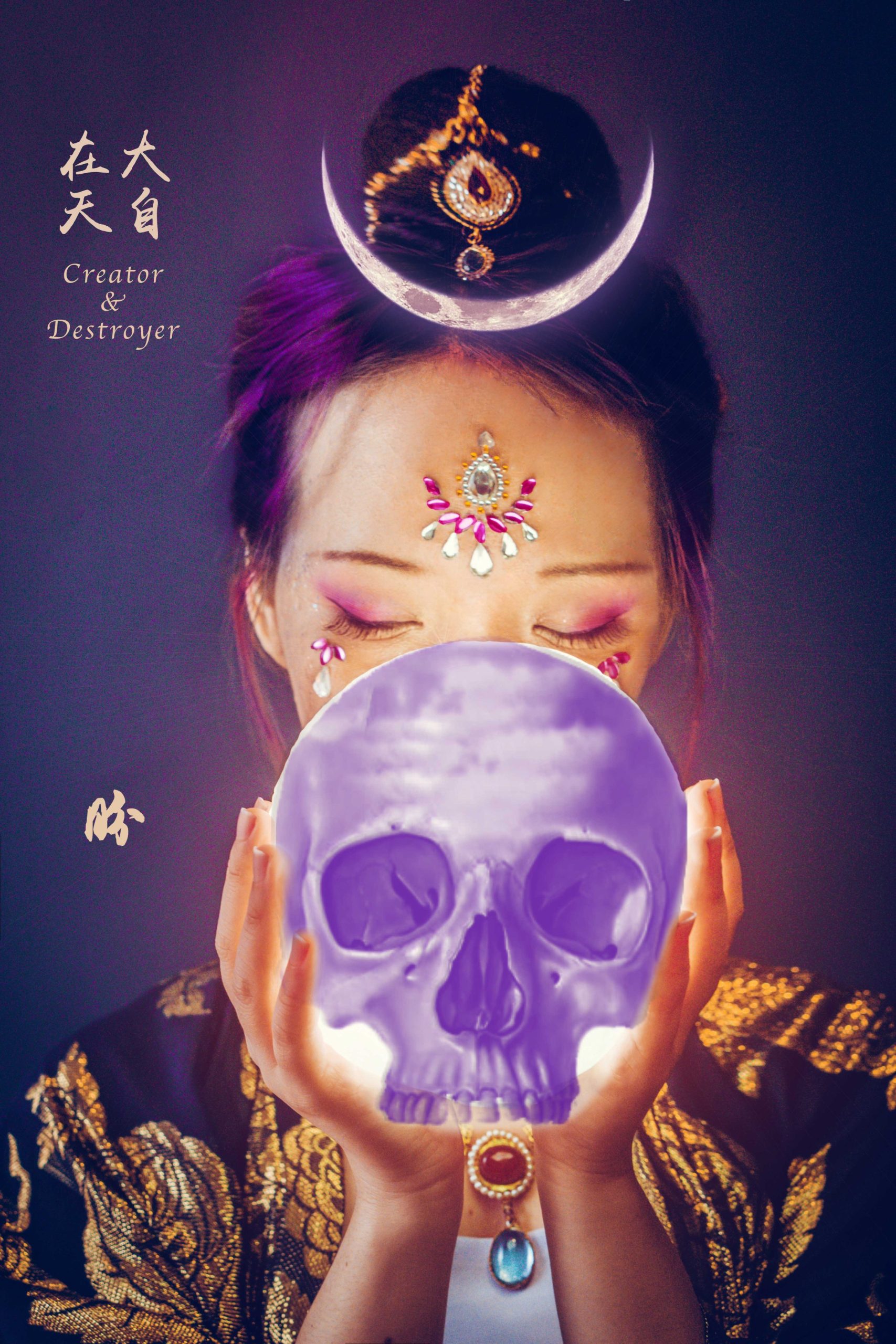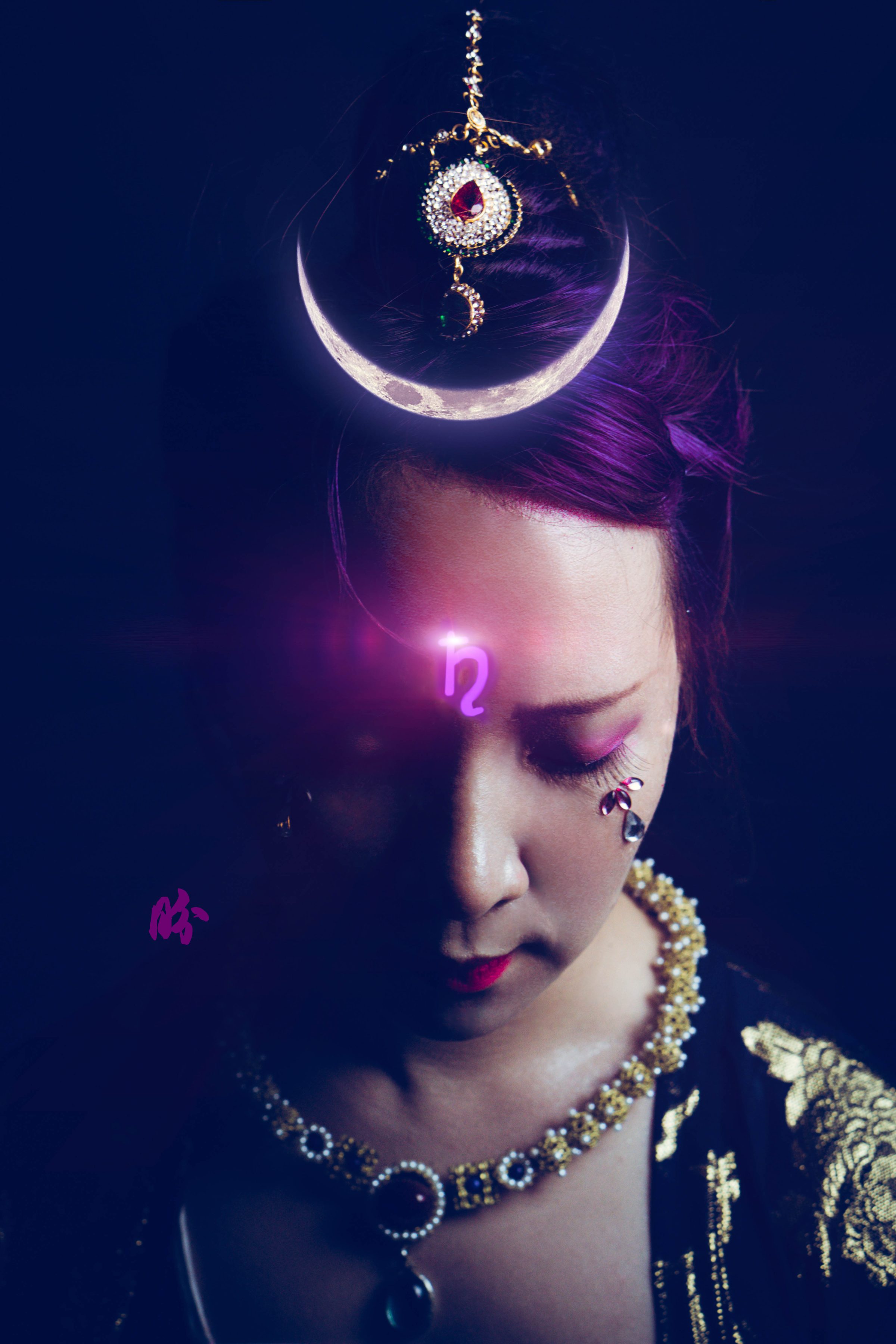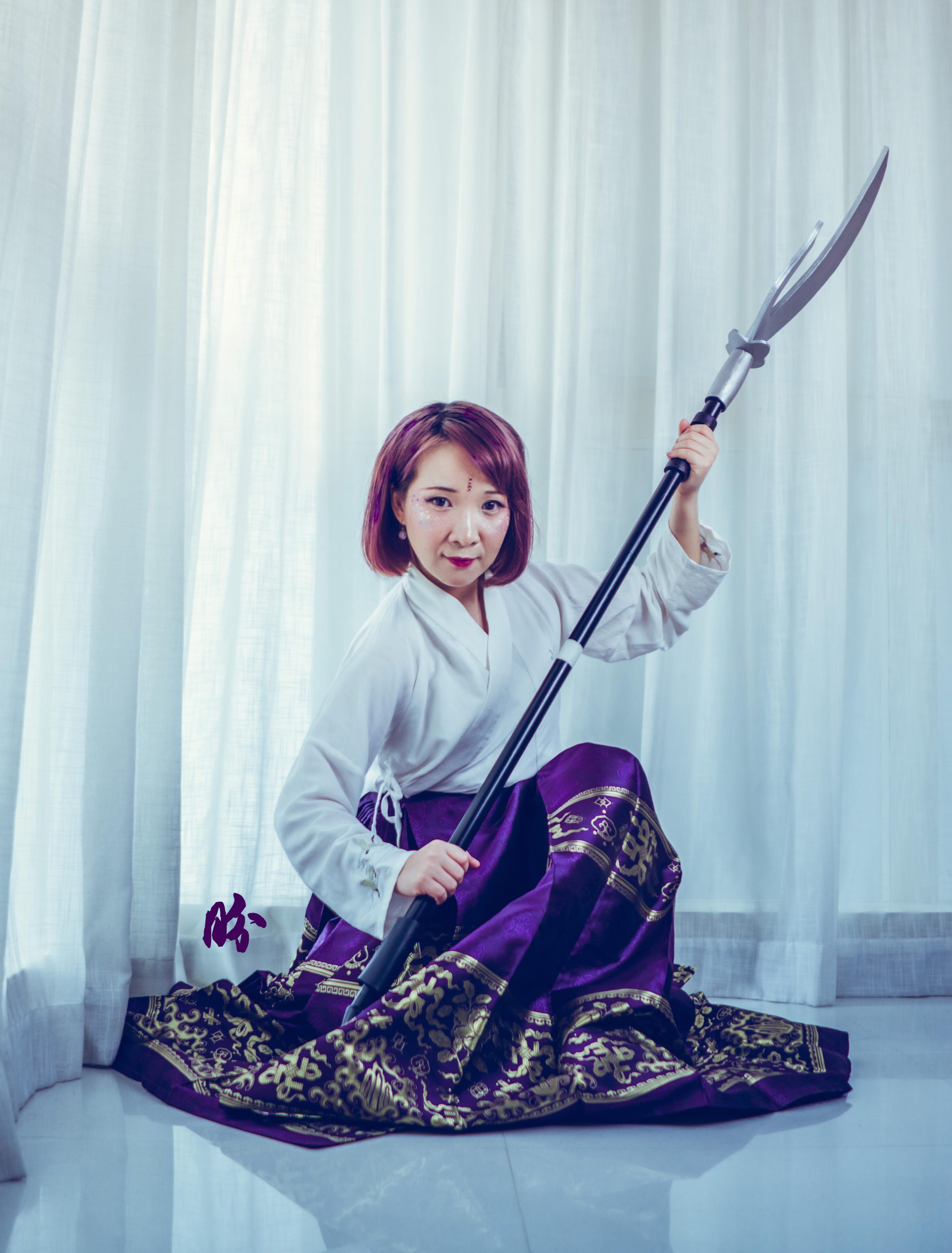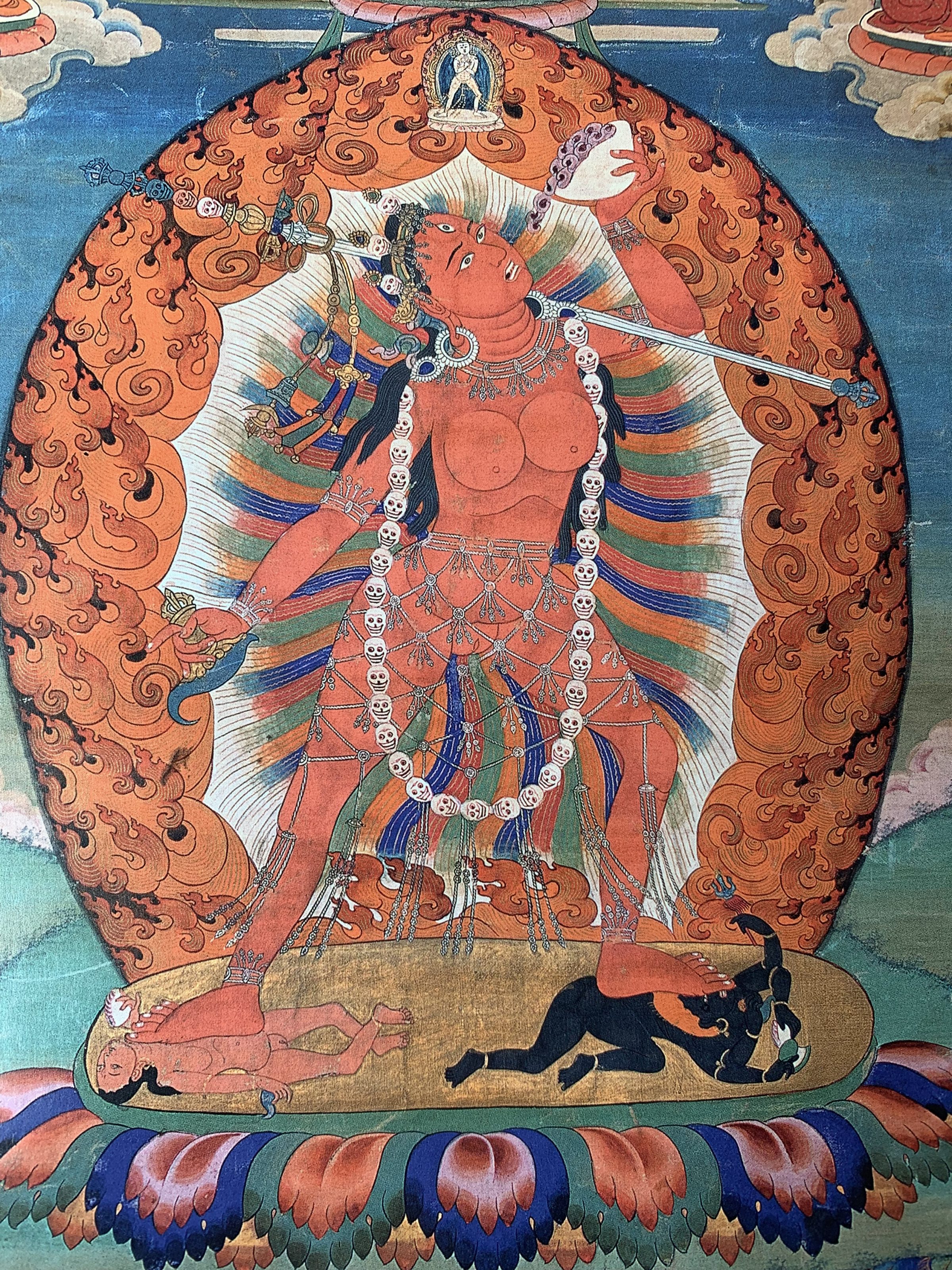Your cart is currently empty!
Hanfu Sailor Saturn, the Creator and Destroyer 大自在天

The last Sailormoon crossover mythology series would end with Sailor Saturn, the creator, and destroyer which I am alluding to the Chinese Buddhist deity whose original form was the Hindu god Lord Shiva. I wanted to use this post to talk about the fusion of beliefs in Chinese culture that has been prevalent for thousands of years, and of course, the inclination towards femininity that’s inherent in this culture that ironically has been perceived as nothing but patriarchal.
There’s a common misconception that the Chinese culture is one monolithic bloc–the Han Chinese traditions (thus Taoist and Confucian beliefs), but if one really studies its history and evolution, we would realise that the concept of a cosmopolitan society and cross-cultural influences has been part of humanity for thousands of years (including that of the Chinese).
Now, I have to disclaim that I’m not really familiar with the Buddhist and Hindu traditions, but I did what I could to read up on it, and I hope that I did not misrepresent them or show any disrespect through this post and images. But the fusion of the cultures and beliefs during Tang dynasty (8-10th Century) is really fascinating, and that’s something worth delving into through the perspective of astrology, and naturally, Sailormoon.
Buddhism in ancient China

Buddhism was introduced to China in the Han dynasty over 2,200 years ago, with the opening of silk road and trade with places beyond China. However, during that period, the Buddhist scripts were not translated into Chinese, so while people are aware of its existence, its spread was limited due to the lack of understanding from the Chinese.
Then, after the Han Dynasty ended, China was divided into many states (again!) and many of its land was occupied by nomadic tribes and with them, the very diverse cultures and practices pervaded and intermingled with the Han Chinese culture.
During this period, this monk/translator/scholar/missionary from the kingdom of Kucha by the name of Kumarajiva (Dad from ancient India–Kashmir, mom from Kucha) did many translations of the Buddhist texts into Chinese and laid the foundation of the flourishing and widespread adoption of Buddhism in China proper. And it is also during this period that the famous Dunhuang grottoes, located in at the heart of Silkroad were first carved.
Hinduism and Buddhism

In the early days of Buddhism, there were not many gods/deities. As time went by, different branches of Buddhism were formed and there were Theravada (小乘佛教)and Mahayana (大乘佛教) Buddhism. The latter allowed the inclusion of other deities from Hinduism and Lord Shiva was one of the Hindu deities that were added to the Buddhist belief.
I have created the image that merges Sailor Saturn with certain features of Lord Shiva, and dressed in a Sui/Tang (7-10th Century) style, fusing Indian with Tang Chinese culture because that was the spirit of the time. It was also a period when the Chinese embraced Mahayana Buddhism (because of the famous Journey to the West). She is also female in my case because the Chinese have a preference for female deities (perhaps in line with their matriarchal tradition of worshipping female goddesses) and they have a track record for turning an originally male Buddhist boddhisatva (Guanyin) into a female in their own cultural context.
Perhaps it is not surprising that the Chinese have been seen as more effeminate (and recent years, our guys have been accused of being effeminate) because it is, after all, a culture that pride itself on finesse and not physical strength.
The iconic feature of Lord Shiva in Hinduism was the serpent around his neck, the crescent moon at the top of his head, the third eye on his forehead, the holy river Ganga flowing from his hair, and a trident.
Coincidentally, Sailor Saturn also has a trident-like weapon. And she is also known as the creator and the destroyer.
Astrology and Religion

During medieval China (Tang dynasty, about 8-10th Century), Mesopotamian and Indian astrology came into China and infused with the local Chinese astrology. Buddhism in China, too, incorporated astrology into its beliefs. So Buddhism in China during that period, was a fusion of Babylonian, Indian and Chinese beliefs (Taoism). This very interesting mix of Buddhist astrology in China, then spread to Korea and Japan, and according to scholar Jeffrey Kotyk, built bridges between Buddhist society and more strictly non-Buddhist elements of society.
Yes, strictly speaking, Buddhist scripts forbid astrology and divination yet Indian astrological texts with Buddhist themes were translated into Chinese and the monks were practicing them.
And the evidence of this fusion of religious belief in cosmopolitan China’s Tang dynasty could be found in their painting “Tejaprabhā Buddha and the Five Planets” painted in 897CE below:

In this painting, Saturn was depicted as a Brahmin carrying a staff, and coincidentally (or not?) Sailor Saturn in the Sailormoon series has also an iconic weapon which is a single-sided blade on a pole. Apparently, in Western astrology, planet Saturn is known as the Grim Reaper (thus the weapon). Based on what I understand, many of the Chinese astrology figures were based on Indian and Mesopotamian/Iranian astrology, so perhaps there is some link somewhere between these two (but it’s a bit beyond my research at this point to establish or affirm anything).
Skulls, Duality and Buddhism

In the Sailormoon series, Sailor Saturn was closely associated with death and destruction, and also birth and creation. This duality reminded me a lot of the powers of Lord Shiva, and also the prevalent idea in Chinese belief that destruction is not the end in itself, but it also signifies beginnings in this cycle (like phoenix rising from the ashes). But in Chinese Buddhism, instead of Shiva, he was given the name Da Zi Zai Tian 大自在天.
When we think of Chinese adaptation of Buddhist figures, one of the most famous one is Guanyin (Goddess of Mercy), a bodhisattva which was originally in a male form but later took on a female form in the Chinese Song dynasty (12th century). This has a lot to do with the Chinese’s perception of a deity which is all about benevolence– of course, it’s got to be a woman right as with many of its ancient mythological figures.
It is unusual to link Buddhism with skull heads, but I also found out that Tibetan/Vajrayana Buddhism’s Dakini (which is a holy woman) also has been portrayed as wearing a necklace made up of skulls. In its initial stage, she was actually perceived as a devil or witch but as the religion evolved, she took on a different form.

The concept of duality is interesting. It reminds me of the Taoist idea of Yin and Yang, and Newton’s third law that for every action there’s an equal and opposite reaction. It’s also intriguing how as religions and beliefs evolve, different deities and mythological figures could take on various forms and have different roles.
In the ancient past, where cultural appropriation was not so much of a concern, I guess the ancients could get away with exercising a lot more liberty on how they wish to adapt and change certain aspects of another culture to suit their own needs which eventually resulted in really diverse and vibrant belief systems and traditions. This part of history and cultural exchange really fascinate and excites me, and I do hope that genuine efforts of showing appreciation and inspiration by certain cultures would not be misconstrued or labelled as cultural appropriation in this increasingly PC and triggered world.


Leave a Reply